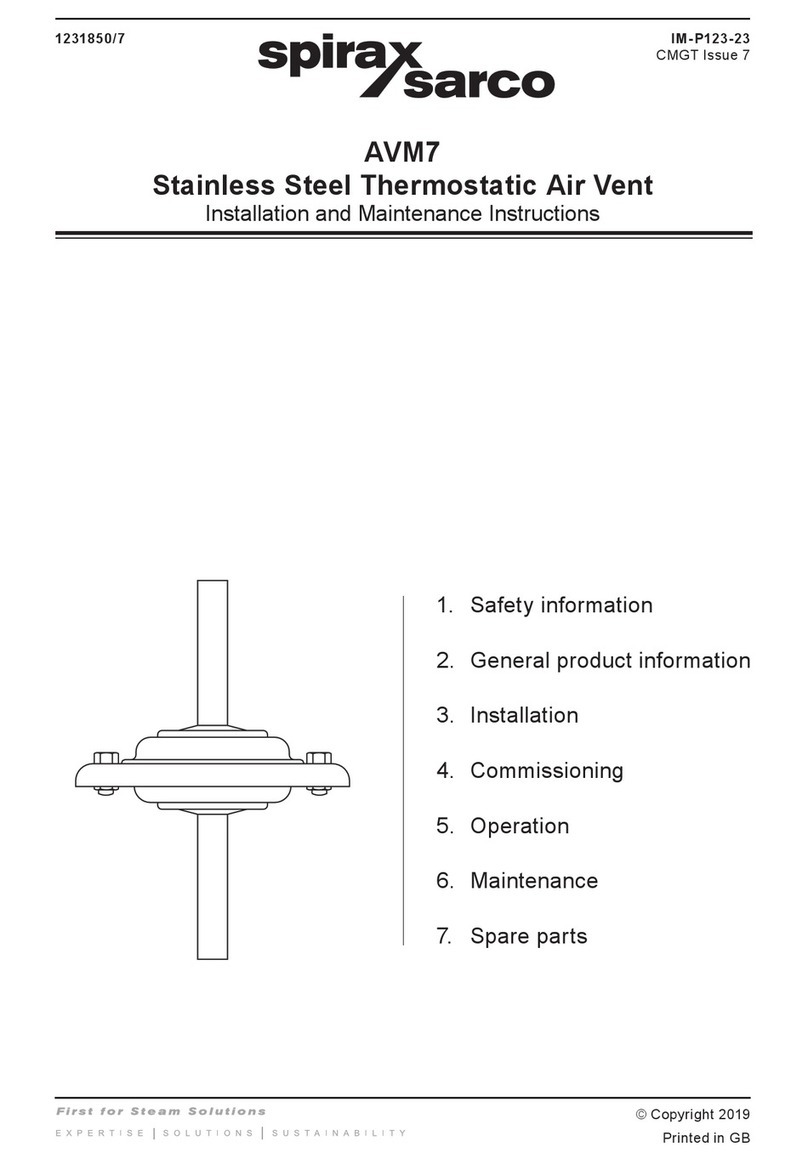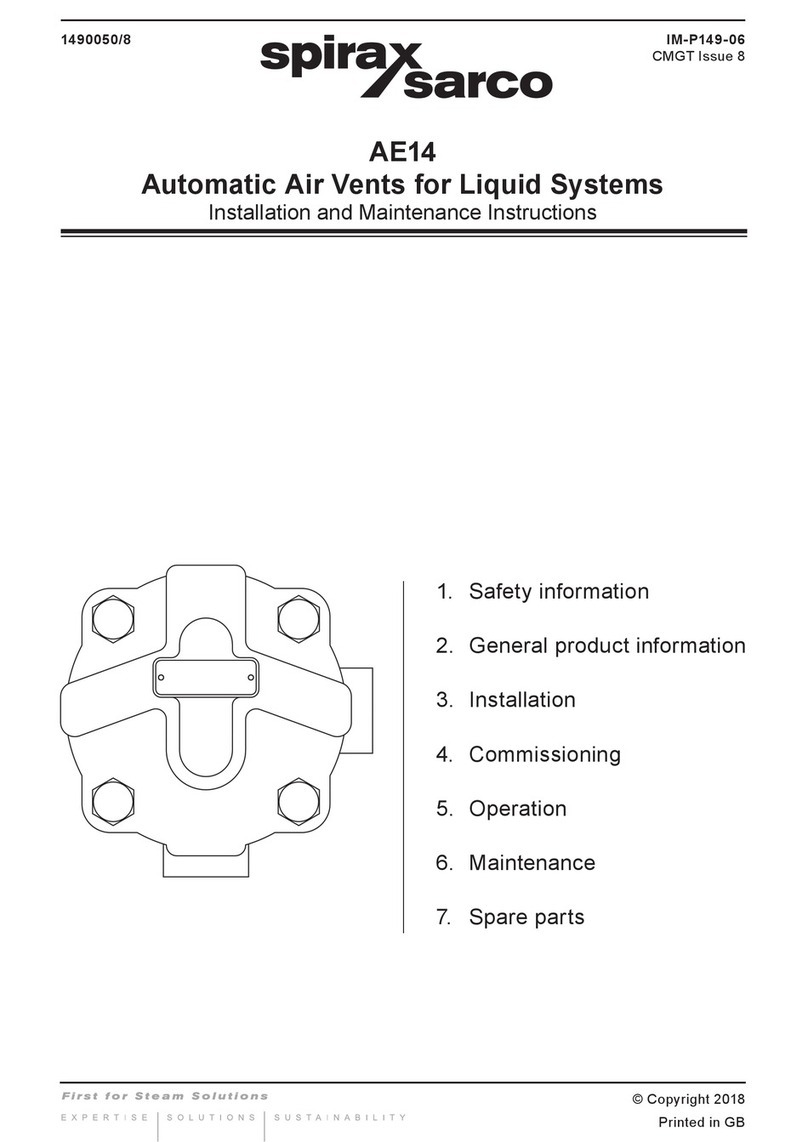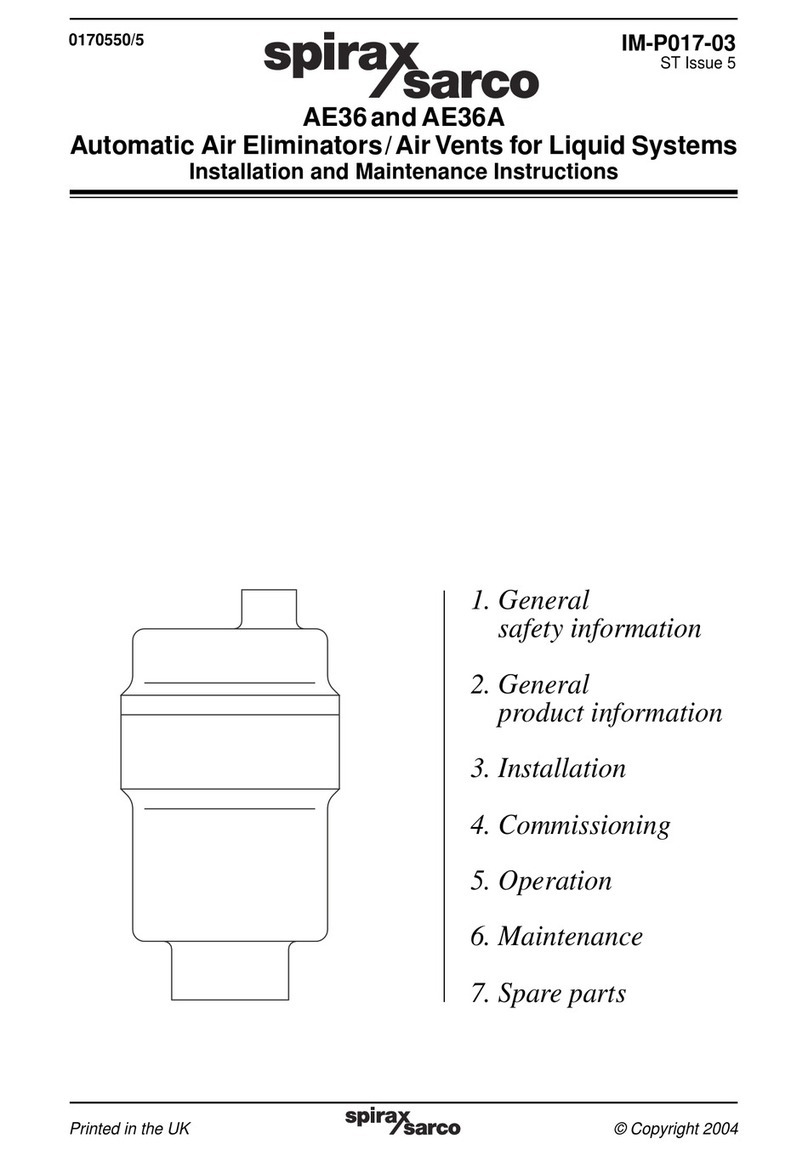
IM-P123-17 ST Issue 4 3
1.5 Hazardous environment around the product
Consider: explosion risk areas, lack of oxygen (e.g. tanks, pits), dangerous gases,
extremes of temperature, hot surfaces, fire hazard (e.g. during welding), excessive
noise, moving machinery.
1.6 The system
Consider the effect on the complete system of the work proposed. Will any proposed
action (e.g. closing isolation valves, electrical isolation) put any other part of the
system or any personnel at risk?
Dangers might include isolation of vents or protective devices or the rendering
ineffective of controls or alarms. Ensure isolation valves are turned on and off in a
gradual way to avoid system shocks.
1.7 Pressure systems
Ensure that any pressure is isolated and safely vented to atmospheric pressure.
Consider double isolation (double block and bleed) and the locking or labelling of
closed valves. Do not assume that the system has depressurised even when the
pressure gauge indicates zero.
1.8 Temperature
Allow time for temperature to normalise after isolation to avoid danger of burns.
If parts made from Viton have been subjected to a temperature approaching
315°C (599°F) or higher, it may have decomposed and formed hydroflouric acid. Avoid
skin contact and inhalation of any fumes as the acid will cause deep skin burns and
damage the respiratory system.
If parts made from PTFE have been subjected to a temperature approaching
260°C (500°F) or higher, they will give off toxic fumes, which if inhaled are likely to
cause temporary discomfort. It is essential for a no smoking rule to be enforced in
all areas where PTFE is stored, handled, or processed as persons inhaling the fumes
from burning tobacco contaminated with PTFE particles can develop 'polymer fume
fever'.
1.9 Tools and consumables
Before starting work ensure that you have suitable tools and/or consumables
available. Use only genuine Spirax Sarco replacement parts.
1.10 Protective clothing
Consider whether you and/or others in the vicinity require any protective clothing
to protect against the hazards of, for example, chemicals, high/low temperature,
radiation, noise, falling objects, and dangers to eyes and face.
1.11 Permits to work
All work must be carried out or be supervised by a suitably competent person.
Installation and operating personnel should be trained in the correct use of the
product according to the Installation and Maintenance Instructions.
Where a formal 'permit to work' system is in force it must be complied with. Where
there is no such system, it is recommended that a responsible person should know
what work is going on and, where necessary, arrange to have an assistant whose
primary responsibility is safety.
Post 'warning notices' if necessary.
































